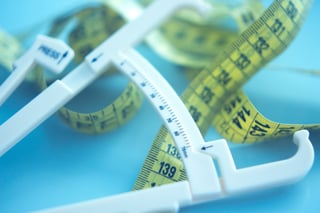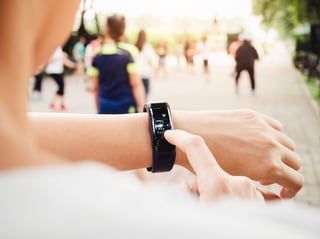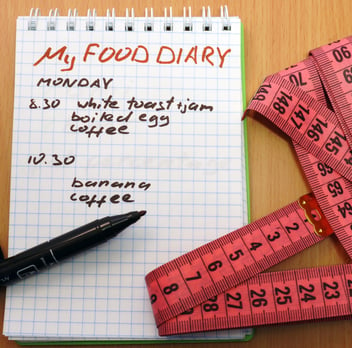It so common for me to hear from clients that they know they need to count calories to be successful with weight loss. Indeed - there is a loud drum beat for that "calories in/calories out" message where the assumption is that you have to burn more calories than you eat to lose weight.
That's been the dominant narrative in weight los for a long time. It's taught in school, and in theory the math works. But weight loss is so complicated that it's really inappropriate to distill the complexity down to a simple greater than/less than equation.
A Weight-Loss Method That’s Hard to Sustain
For those who have followed this concept of “calories in, calories out,” has it been working? Many individuals I speak to have experienced hunger throughout the day and have low energy levels for daily activities. They find this eating method difficult to sustain for a long period of time and find themselves back into their old eating habits. Have you considered whether this eating method is the healthiest solution for you? Many individuals who follow this method are dissatisfied with the results. They tend to lose a majority of weight in lean muscle mass as opposed to fat loss. If that is the case, is counting calories an effective process for losing fat weight? Many share their frustrations of feeling tired and lethargic when focused on counting calories. They feel their health is jeopardized when the focus is on counting calories and exercising more.

Focusing on Food Quality
So how does one achieve good health and be content with their body composition without counting calories? One way to have a positive health outcome is to focus on quality of foods and how those foods affect your body. Quality foods will restore the body’s hormones and enable the body’s metabolism to work efficiently. The body will have the ability to break down stored fat for energy, providing a stable body weight for the long haul. Selecting quality foods keeps us full and satisfied throughout the day, and provides the body with the nutrition required to maintain good health.
Quality foods contain fiber, healthy fats, protein, and low levels of sugar. Fruits and vegetables are loaded with nutrients and contain natural sugars, which are the best choice for healthy eating without having to consider calorie counting. Healthy fats and proteins are the best choice for feeling full and satisfied throughout the day. When consumed they keep blood sugar levels stable, providing a healthy result.
So, which side will you take? The “calories in, calories out” approach, which does not provide long-term healthy results, or provide your body with quality foods rich in nutrients that enable your body’s metabolism to work efficiently and restore your body to good health? You choose.


.jpg?width=378&name=Senior%20dancing%20GettyImages-504735537%20(1).jpg)

 It's hard for me to believe that the first season of the reality show Biggest Loser aired in 2004. The popularity of that show has inspired all manner of weight loss competitions held under the banner of workplace health. Over the years, as a
It's hard for me to believe that the first season of the reality show Biggest Loser aired in 2004. The popularity of that show has inspired all manner of weight loss competitions held under the banner of workplace health. Over the years, as a 
 For years, fitness professionals have been trained to use Body Mass Index (BMI) as a prescreening tool when individuals join a fitness program. It was part of the recommendations by the
For years, fitness professionals have been trained to use Body Mass Index (BMI) as a prescreening tool when individuals join a fitness program. It was part of the recommendations by the 
 These days it seems there is one new health or
These days it seems there is one new health or 
 If it’s the most important meal of the day, why do about 31 million people or 10% of the population still
If it’s the most important meal of the day, why do about 31 million people or 10% of the population still  Lots of research has been done over the years to figuret out the best recipe for success when it comes to weight loss. Diet alone? Exercise alone? Or a combination of both? It should come as no surprise that the key for weight loss and keep it off is to combine a low-fat, lower-calorie diet with an exercise routine.
Lots of research has been done over the years to figuret out the best recipe for success when it comes to weight loss. Diet alone? Exercise alone? Or a combination of both? It should come as no surprise that the key for weight loss and keep it off is to combine a low-fat, lower-calorie diet with an exercise routine.  Every year the
Every year the  Best Weight-Loss Techniques
Best Weight-Loss Techniques
 The holidays are right around the corner, and the first thing that comes to mind is all that food! You don’t want to look like a Santa at the start of the New Year! Well, don’t feel guilty about consuming the goodies; just get smart! If you have an understanding of what it takes to properly fuel your body, specifically as you age, the healthy eating process doesn’t seem so daunting. Older adults have different needs, and there are some key nutrients that are really important to maintain.
The holidays are right around the corner, and the first thing that comes to mind is all that food! You don’t want to look like a Santa at the start of the New Year! Well, don’t feel guilty about consuming the goodies; just get smart! If you have an understanding of what it takes to properly fuel your body, specifically as you age, the healthy eating process doesn’t seem so daunting. Older adults have different needs, and there are some key nutrients that are really important to maintain.